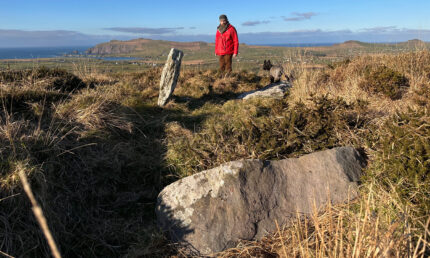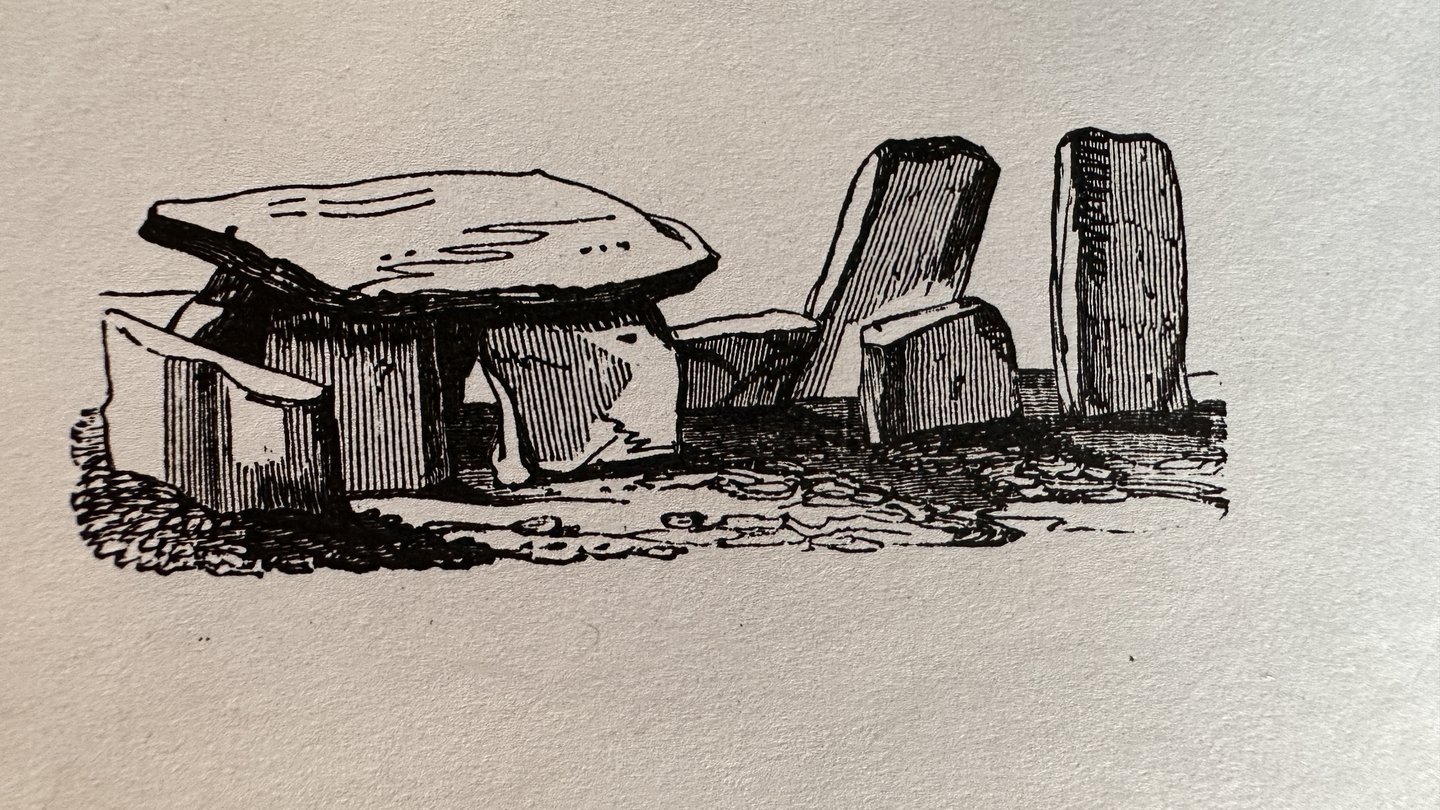 A local folklorist has discovered the remnants of a Bronze Age tomb that was believed to have been destroyed in the mid-19th century. The megalithic structure known as Altóir na Gréine (the altar of the sun) was built on top of a hill outside the village of Ballyferriter, County Kerry, about 4,000 years ago. It was a wedge tomb, a funerary monument containing the cinerary remains of a family or community group but may also have been used for other ceremonial purposes. This style of tomb is typically oriented to the west or southwest and may have had a cosmological connection to the setting sun, hence its traditional appellation.
A local folklorist has discovered the remnants of a Bronze Age tomb that was believed to have been destroyed in the mid-19th century. The megalithic structure known as Altóir na Gréine (the altar of the sun) was built on top of a hill outside the village of Ballyferriter, County Kerry, about 4,000 years ago. It was a wedge tomb, a funerary monument containing the cinerary remains of a family or community group but may also have been used for other ceremonial purposes. This style of tomb is typically oriented to the west or southwest and may have had a cosmological connection to the setting sun, hence its traditional appellation.
It was still intact in 1838 when it was visited as a local attraction by Victorian writer and world traveler Lady Georgiana Chatterton. She recounted her visit, complete with a sketch of the “sun altar,” in her best-selling travel memoir Rambles in the South of Ireland.
On the top of the hill were the remains of a very curious piece of antiquity, once an altar, supposed to have been used for offering sacrifices to the sun. We heartily wished we could have had an opportunity of telling the sun, before hand, of our intention of visiting his altar; for a more thick, penetrating rain I think never was experiences, than fell to our lot while poking over the remains of the old stones, and taking the sketch which is here given.
Inspired by Lady Chatterton’s record of her ramble, Kerry antiquarian Richard Hitchcock visited the hill site in 1852 seeking what he called the cromleac (literally “bent stone” meaning a megalithic tomb with two standing stones topped by a capstone) that she had sketched.
I regret to say that this cromleac, or, as Lady Chatterton calls it, “sun altar,” does not now exist, the stones which composed it having been broken and carried away for building purposes, as if there were no others in the neighbourhood! It is, however, fortunate that we have even a small engraving of the monument preserved to us.
That last line proved prescient. The location of the lost tomb disappeared from collective memory and nobody had ever noted its coordinates when it was still apparent on the landscape. It was Lady Chatterton’s sketch that bore mute witness to its presence 185 years later when folklorist Billy Mag Fhloinn came across megalithic stones on a tomb-mapping project on the Dingle peninsula run by Sacred Heart University. He was very familiar with the drawing and specifically had it in mind when he climbed the hill looking for the long-lost Altóir na Gréine and filmed the stones he saw there.
When converting the video into a 3D scan he noticed that a stone in the undergrowth resembled one from Lady Chatterton’s Victorian-era sketch.
He sent the material to the National Monuments Service in Dublin, which dispatched archaeologist Caimin O’Brien, who confirmed it belonged to a so-called wedge tomb dating from the early bronze age between 2500BC and 2000 BC.
There is a capstone and several large upright stones called orthostats, comprising about a quarter of the original tomb, Mag Fhloinn said on Thursday. “People had assumed it was all destroyed.”
